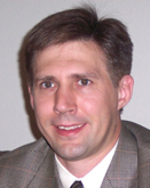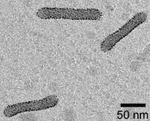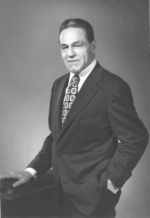If there were a national championship in chemistry, Rice would be Ohio State.
Every week, it seems, I see something new from the Rice Chemistry Department. They’re hotter than Peyton Manning, Albert Pujols, and LeBron James combined.
The latest lab to report in is that of Eugene Zubarev (left). His troops have revealed a method for building nanostructures based on biological processes.
Zubarev used the same hydrophobic effect living creatures use to create membranes, which seal our cells from the outside world. Cell membranes are made of fat-based amphiphiles, which have a water-loving side and a water-hating one. Stick the water loving sides together, just like Scotch Tape, and you’ve got a barrier to water, what scientists call a bilayered
micelle.
In the Rice experiment, Zubarev’s team first created V-shaped amphiphiles made of ethylene oxide, then attached gold particles at each focal point. By adding water and inducing micelles to form, they created tightly
packed cylinders of gold nanoparticles measuring 18 nanometers in
diameter (right).
Using a life process to create an obviously inorganic compound means the same process might be used to create other large-scale nanoparticles, from other materials. It’s hyberbole to say Zubarev has found a way to create inorganic nano-life, but it is a step in that process.
Team Zubarev’s report, which will be published in this week’s Journal of
the American Chemical Society, continues a roll for the Rice University Chemistry department that Tiger Woods would envy. Just in the last few weeks we’ve had:
- Mass production of nanotubes from seeds.
- A solution to arsenic poisoning in Third World water supplies using nano-rust.
- The ionizing of short nanotubes so they can be doped with medicine.
That’s one month’s reporting. There’s tons more going on.
Let me add one personal note. Dr. Zubarev’s title is Norman
Hackerman-Welch Young Investigator. Dr. Hackerman (right) was President of Rice
when I was there in the 1970s.
He was a chemist by trade, but had gone
into administration, partly because things were slow in chemistry. He
got to know me fairly well, because I kept getting into situations that
demanded his attention.
I secretly hoped, while I was giving him ulcers, that he could find some
compensation, in this life or the next, for the pain I was causing him and the institution.
Then, in my senior year, he hired Dr. Richard Smalley. I’d like to hope it all balances out….<g>














Hi,
Very nice informative post.Yes you are number one in the chemistry field..Good luck…
Hi,
Very nice informative post.Yes you are number one in the chemistry field..Good luck…